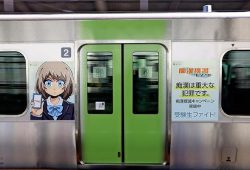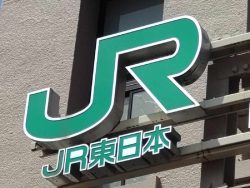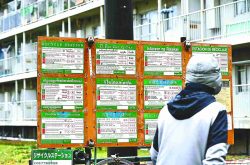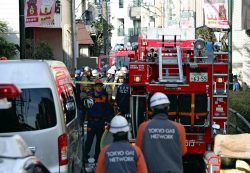Fans Use Ads at Stations, Aboard Trains to Show Support for Stars; Stations, Companies Embrace New, Growing Market
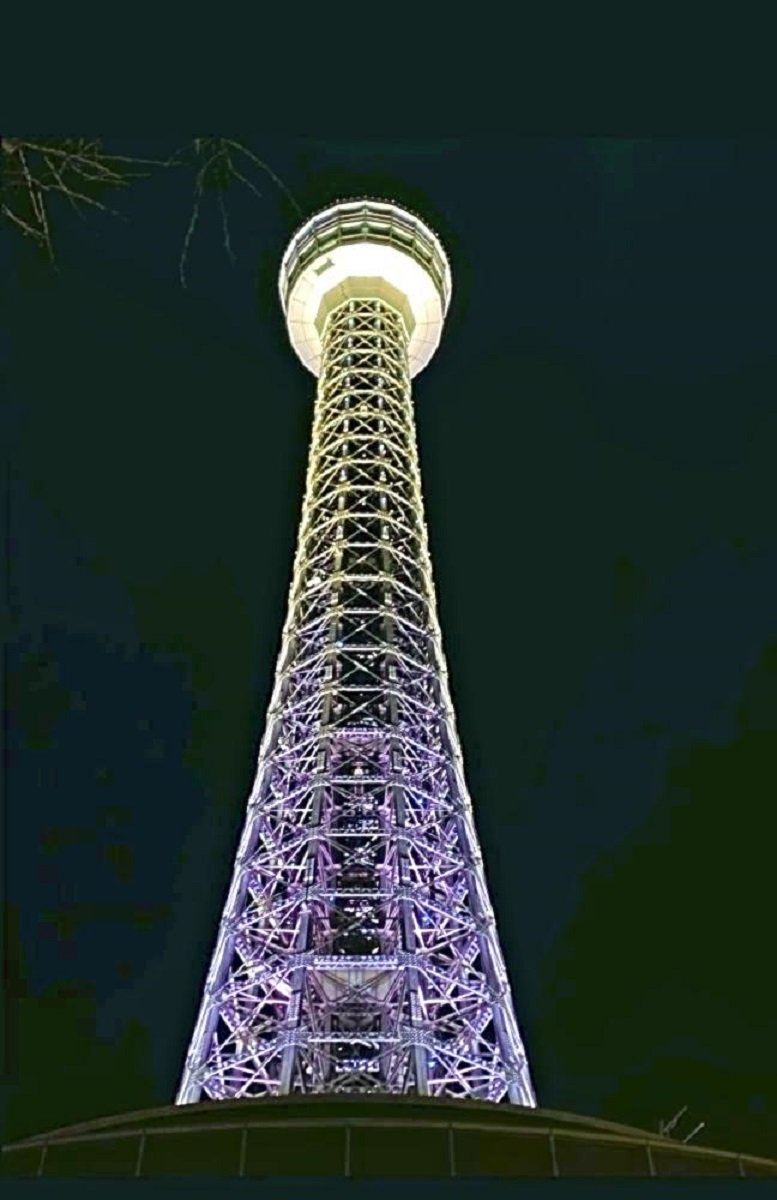
Yokohama Marine Tower is illuminated to celebrate the birthday of an anime character with connections to Yokohama. Special designs with multi-color gradients are available as well.
12:39 JST, June 13, 2024
YOKOHAMA — Fans hanging up advertisements at places like train stations to support their favorite artists and idols is a fresh trending topic. The fans have been calling for like-minded people on social media to run crowdfunding campaigns and support the stars they adore by funding advertisements and posting videos on special occasions, such as their birthdays and debut anniversaries.
This whole package is gaining traction as a new kind of fan-level action. Some train stations now have a dedicated space for these kinds of ads, and the market is expanding.
Inside Minatomirai Station in Nishi Ward, Yokohama, eager fans have been seen taking photos in front of a poster celebrating J-pop boyband JO1 member Takumi Kawanishi’s appearance in a film.
The poster was funded by four women from four different parts of the country — Akita, Tokyo, Chiba and Fukuoka. The women connected over social media. They planned to produce the poster, which they designed themselves, three months ago to root for Kawanishi from Minatomirai, one of the film’s locations. They placed an order with a printing company and went through an advertising agency to get the poster put up at the station. The whole process cost them ¥150,000.
“We’ve received a huge response, which is exciting and emotional,” said one of the fans, a 28-year-old woman who lives in Shinagawa Ward, Tokyo. “I hope this poster will give us and other fans the opportunity to expand our circle so we can cheer him on together.”

Fans take selfies with a fan-designed ad at Minatomirai Station in Yokohama on May 4.
These fan-produced ads are called “saengil ads” and have their origin in South Korea — saengil means “birthday” in Korean. The ads first appeared in Japan around 2019 while the Japanese version of a popular South Korean audition TV show was broadcast.
JR East Marketing & Communications, Inc., which handles train station ads for businesses including railway operators, launched a specialized service in Tokyo for the ads in January 2022. The company’s services include requesting permission to use an artist’s photo through their entertainment agency on behalf of a client. Clients have reacted positively to the service, partly due to its simple system, which allows purchases of ad space via smartphone. Last fiscal year, the company received orders from more than 1,000 groups, nearly three times more than the previous fiscal year.
The ads can be run on such media as posters at stations and on streets, digital signs and even cinema screens. Other options include bus wraps and “oshi densha” (fave trains), where the client’s ad fills the entire ad space. A poster at a major station in Tokyo can cost about ¥100,000 per week. Competition over optimal ad space at stations can be fierce, even with price tags as high as several hundred thousand yen.
According to a survey by JR East Marketing & Communications, the ads attract a huge amount of interest, especially among young people. The company believes the market has the potential to grow to about ¥38 billion, about 10% of all the domestic spending on outdoor advertisements last year.
“People used to have a common impression that companies run ads. Now, however, the environment is ripe for ordinary individuals to do it. I hope these kinds of ads will spread to the sports world and beyond,” said Chihiro Kawahara, 41, project leader at the company.
Railway companies used to be risk averse when it came to displaying these kinds of ads because of the public perception of advertising on trains and at stations, but now they are changing their attitude. The Minatomirai Line, along which large music venues have recently opened in succession, began accepting orders for fan-sponsored ads in fiscal 2022. The company processed 18 ads that fiscal year and 72 in fiscal 2023. The company has also expanded exclusive ad space for this type of ad.
“When you’re on your way to a concert venue, you can see your favorite star the moment you get off the train, which can be an added excitement. It will also help bring more people to the station,” said a person involved in the project.
There are also moves to set up rules stipulating that fan-funded ads must not be displayed at places that become crowded, such as near ticket gates and escalators. West Japan Railway Co. and Tokyu Railways have restrictied these ads to large spaces inside terminals. Seibu Railway Co. and Keisei Electric Railway Co. make it mandatory for the ads to include commercial information, such as dates of events and CD releases, explaining that ads with messages only may be considered advocacy ads.
Sagami Railway Co. does not allow fan-created ads, arguing that they may violate artists’ portrait rights. Tobu Railway Co., on the other hand, publicizes that the giant display inside Tobu Tojo Line’s Ikebukuro Station can be used for the ads.
Diversification in fan activities
“Oshikatsu” — slang for the activities fans engage in to support their favorite artists or characters — is diversifying more and more.
Last year, Yokohama Marin Tower near Yamashita Park in Yokohama started a new illumination service for people to see the tower illuminated in the theme color of the artist they support. The service starts from ¥44,000 for 20 minutes. The facility has received up to 20 orders in one month.
“Lighting up the tower has the advantage of reaching many people,” said Naoki Saito, 38, the manager of the tower.
Tokyo Dome Hotel offers a plan with three rooms per day for fans engaging in oshikatsu. The plan includes the room being equipped with a mirror ball, glow sticks and a projector playing footage of the guests’ favorite stars. The guests can also order a fancy cake using a color theme based on their favorite star.
“We receive many reservations [for the plan], especially when there’s a concert. On some weekends, we have no vacancies,” said a hotel staffer.
“Oshikatsu is changing from a form of self-contained activity, in which fans relish in the happiness their idols give them, to a communication tool for fans who share the amazement and joy of supporting the stars,” said Anna Tatsuno, 30, the representative of Dentsu Girl’s Good Lab who analyzes trends for women and fan culture.
"Society" POPULAR ARTICLE
-

Tokyo Zoo Wolf Believed to Have Used Vegetation Growing on Wall to Climb, Escape; Animal Living Happily after Recapture
-

JAL, ANA Cancel Flights During 3-day Holiday Weekend due to Blizzard
-

Snow Expected in Tokyo, Neighboring Prefectures from Jan. 2 Afternoon to Jan. 3; 5-Centimeter Snow Fall Expected in Hakone, Tama, and Chichibu Areas
-
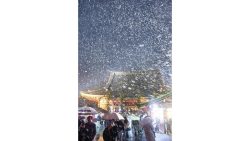
Tokyo, Yokohama Observe First Snowfall of Season; 1 Day Earlier than Average Year
-

M6.2 Earthquake Hits Japan’s Tottori, Shimane Prefectures; No Tsunami Threat (Update 4)
JN ACCESS RANKING
-

BOJ Gov. Ueda: Highly Likely Mechanism for Rising Wages, Prices Will Be Maintained
-

Core Inflation in Tokyo Slows in December but Stays above BOJ Target
-

Osaka-Kansai Expo’s Economic Impact Estimated at ¥3.6 Trillion, Takes Actual Visitor Numbers into Account
-

Japan Govt Adopts Measures to Curb Mega Solar Power Plant Projects Amid Environmental Concerns
-

Major Japan Firms’ Average Winter Bonus Tops ¥1 Mil.




